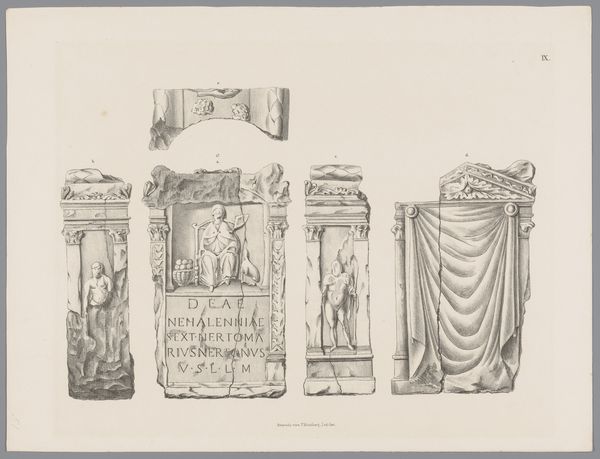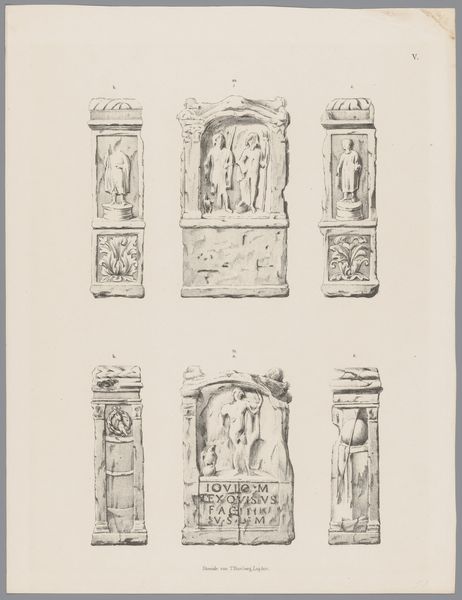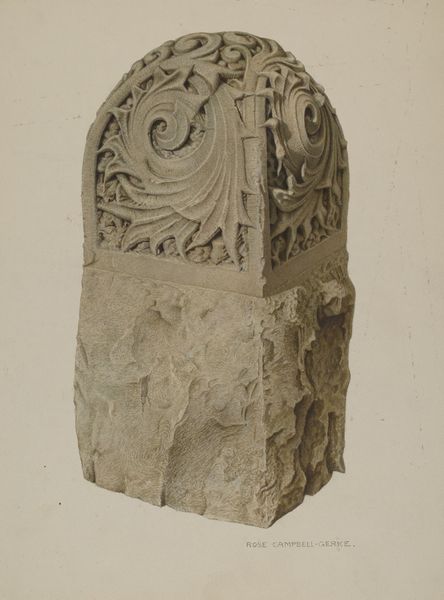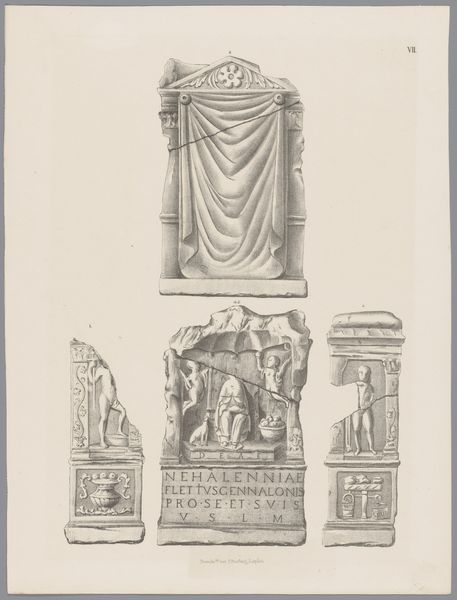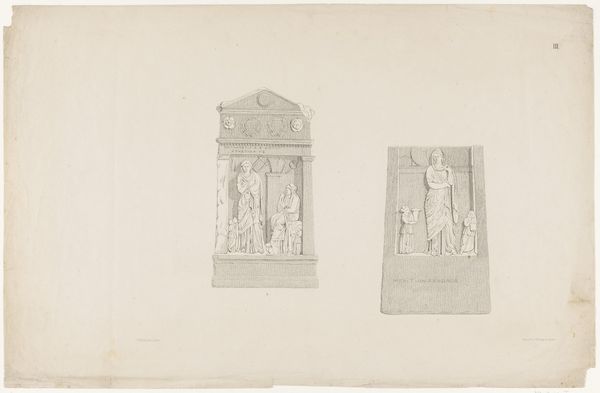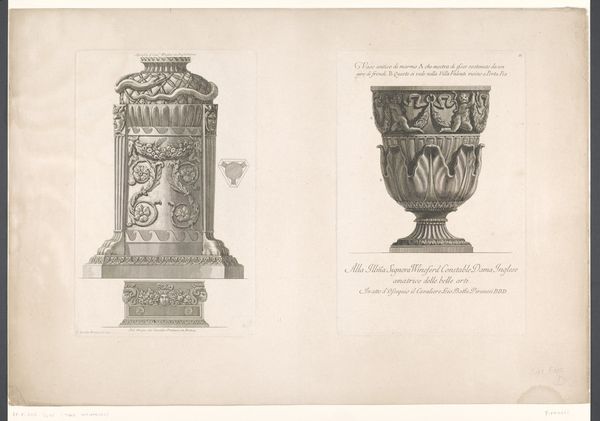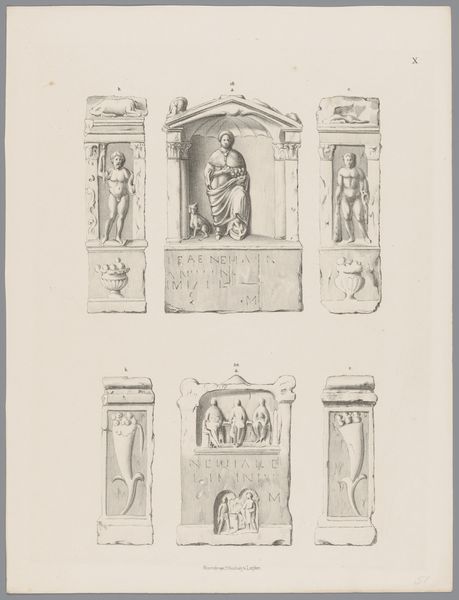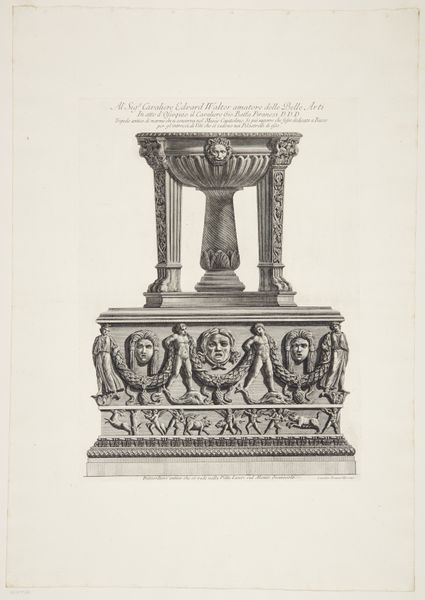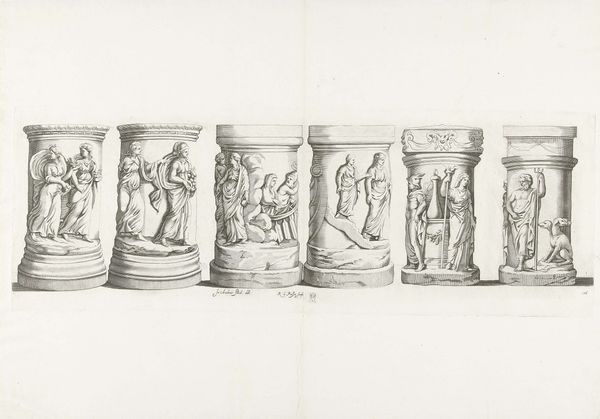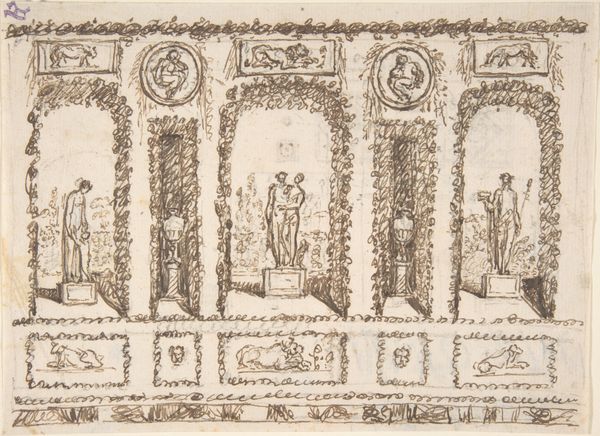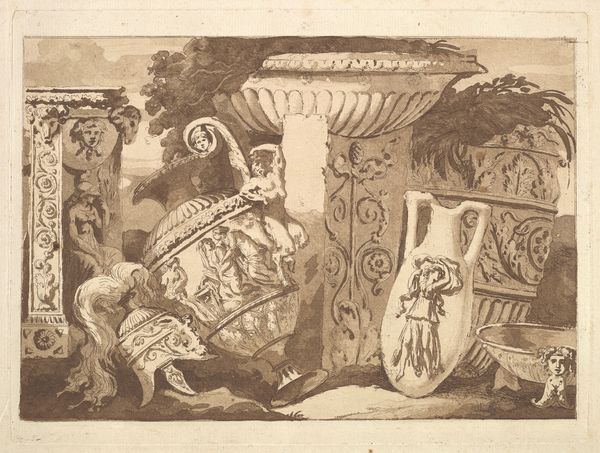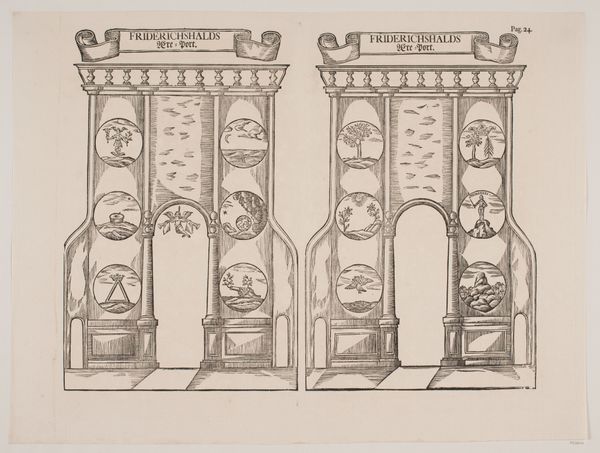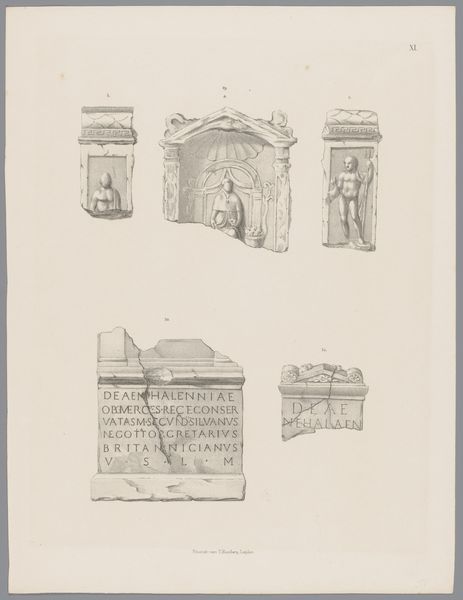
Fragments of frieze, columns and capitals 1751 - 1754
0:00
0:00
drawing, print, engraving, architecture
#
drawing
#
neoclacissism
# print
#
form
#
geometric
#
ancient-mediterranean
#
line
#
engraving
#
architecture
Dimensions: 400 mm (height) x 610 mm (width) (plademaal), 400 mm (height) x 610 mm (width) (billedmaal)
Editor: This is Giovanni Battista Piranesi’s "Fragments of frieze, columns and capitals," created between 1751 and 1754. It looks like an engraving or print of architectural elements. I’m immediately struck by the detail and the almost scientific way these ruins are documented. What do you see when you look at this piece? Curator: I see an explicit emphasis on the material reality of Roman grandeur – or, more accurately, its disintegration. Piranesi, using the reproducible medium of print, democratizes access to these formerly exclusive symbols of power and status. He’s also documenting a specific labor process – the making of these architectural elements and, implicitly, their decay. Editor: Democratizing access is interesting. But what does labor have to do with it? Curator: Consider the physical labor required to quarry, transport, and carve these massive stones, and the societal structures supporting this effort. This print makes that past labor, and lost systems of power and production, tangible and available. It challenges the art historical hierarchy between so-called “high art” like painting or sculpture and architecture. How is a print like this different from an idealized painting of Roman ruins? Editor: The print shows the grit, I guess. The broken edges and uneven surfaces weren't created perfectly. Curator: Exactly. Piranesi isn't just celebrating Neoclassical ideals; he’s offering us the tangible, fragmented remnants of that labor, inviting us to reflect on the cyclical nature of power, production, consumption, and decay. By focusing on ruins, he implicates viewers as complicit consumers. Editor: I never thought about it that way. It’s almost like he's saying, "Look at what's left after the work is done, the glory fades, and the structures crumble." Curator: Precisely. He is not simply representing beauty, but inviting a material reflection on what those objects are, what it takes to make them, and how power is consumed, as well as produced.
Comments
No comments
Be the first to comment and join the conversation on the ultimate creative platform.
